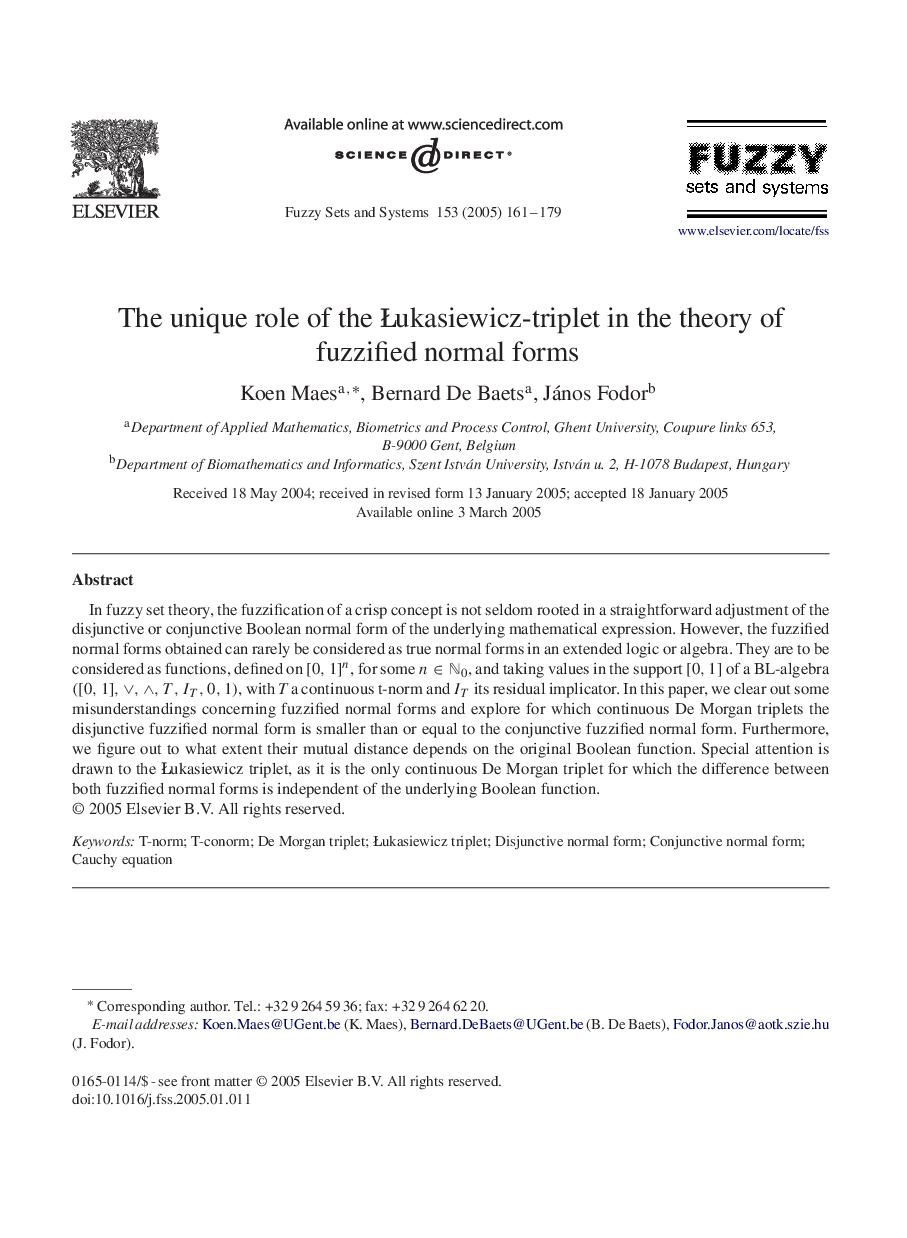| Article ID | Journal | Published Year | Pages | File Type |
|---|---|---|---|---|
| 10323693 | Fuzzy Sets and Systems | 2005 | 19 Pages |
Abstract
In fuzzy set theory, the fuzzification of a crisp concept is not seldom rooted in a straightforward adjustment of the disjunctive or conjunctive Boolean normal form of the underlying mathematical expression. However, the fuzzified normal forms obtained can rarely be considered as true normal forms in an extended logic or algebra. They are to be considered as functions, defined on [0,1]n, for some nâN0, and taking values in the support [0,1] of a BL-algebra ([0,1],â¨,â§,T,IT,0,1), with T a continuous t-norm and IT its residual implicator. In this paper, we clear out some misunderstandings concerning fuzzified normal forms and explore for which continuous De Morgan triplets the disjunctive fuzzified normal form is smaller than or equal to the conjunctive fuzzified normal form. Furthermore, we figure out to what extent their mutual distance depends on the original Boolean function. Special attention is drawn to the Åukasiewicz triplet, as it is the only continuous De Morgan triplet for which the difference between both fuzzified normal forms is independent of the underlying Boolean function.
Related Topics
Physical Sciences and Engineering
Computer Science
Artificial Intelligence
Authors
Koen Maes, Bernard De Baets, János Fodor,
